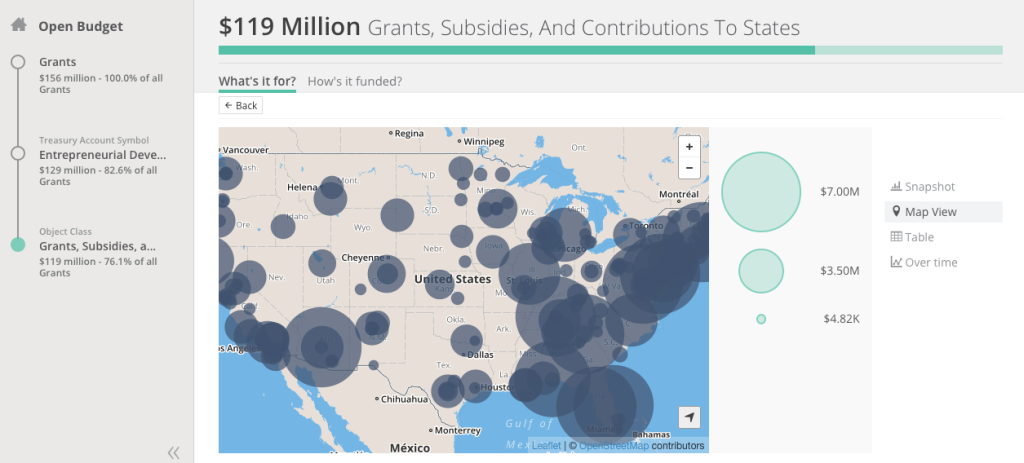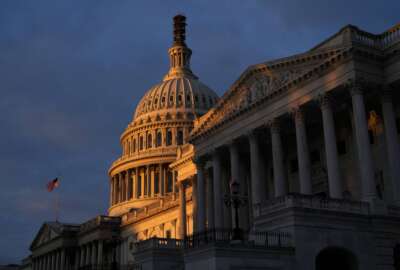Agencies still searching for a way out of their own data silos
A new data pilot from the Small Business Administration is helping the agency keep better track of what grants it makes and where the money goes. It's one small...
The Small Business Administration has made one small step forward in its efforts to better collect, organize and understand its own data.
But SBA and other agencies still are opening up and tying together data within their own individual silos. Breaking down those walls and drawing connections between them will take more time, as agencies implement the Digital Accountability and Transparency Act (DATA Act).
“There are multiple domains over this space and over these data elements,” said Mark Reger, deputy controller at the Office of Management and Budget, Oct. 20 at the Data Transparency Coalition breakfast in Washington. “We’ve just proven we can get a monkey into space. We aren’t quite at landing on the moon. But realistically these are the experiments we have to go through.”
One of those experiments at the SBA is the Grants Data Explorer, a visualization tool that keeps track of what grants the agency is making, where they’re going and how much grant money the recipient has used.
The agency is developing four flat files and adding information on appropriations, object classes and activities and awards — with a fourth file that links awards and financial data together.
Tim Gribben, deputy chief financial officer at SBA, said he’s able to connect the dots and learn more about what each program within the agency is doing, and what they’re doing well.
“We can spend more time doing data analytics and figuring out how are our programs really performing; are they meeting their intended missions; are they covering and are they serving the stakeholders that we think they are,” he said.
In the CFO’s office, Gribben said he only has access to financial data, not the agency’s award system. He said he knows what awards SBA has made within various programs, but not much more about the grants.
Using the visualization tool, Gribben found a case where one organization in San Antonio, Texas received two different grants from two separate offices within SBA.
“There’s no way that they would have known necessarily that this entity received two different awards from SBA,” he said. “That type of an organization that delivers multiple services at SBA, I didn’t know existed sitting in the CFO’s office. And it makes me wonder, what if other synergies might exist that we’re not exploring because one program office doesn’t know where another program office made awards and where they found the partner that they think is viable.”

But the SBA Grants Data Explorer is just one piece of a complicated, tedious puzzle. Right now, the agency cannot link its grants and loans systems together, Gribben said.
Developing solutions for agencies’ performance and procurement data are other projects most agencies haven’t tackled yet. Reger said he envisions a future where agencies can bring those systems together.
“There needs to be relationships drawn between numerous databases so we can share information and there’s a link,” he said. “Those things haven’t been addressed yet.”
Reger said his agency is working on a redraft of OMB Circular A-123. The new version, which he told Federal News Radio will be released by the end of the calendar year, includes information on how agencies can manage the risk that comes with releasing more data.
Other priorities, time crunches slow DATA Act implementation
The Veterans Affairs Department still is looking for a “disciplined process” to make its own data understandable, said Laurie Park, deputy assistant secretary for finance at the VA.
“It’s kind of the Wild West at the VA,” she said. “We have a lot of challenges, but that doesn’t mean we don’t have a lot of good information.”
The VA has 150 financial systems but no numbering scheme to link those disparate systems with its contracting databases, Park said.
The VA and other agencies are running up against a tight timeline and no budget to implement their DATA Act plans and develop more solutions.
“VA does have a lot of challenges we’re dealing with,” Park said. “And frankly our management is focused on that. So for us to keep our focus on a big project like this, and having to use my extra resources, it’s very difficult for us to make really great, efficient progress.”
Both Park and Gribben said much of their work on the DATA Act happens on nights and weekends.
“We’re trying to fit this in with everything else that we’re doing,” Gribben said. “And it’s done through overtime and re-prioritizing activities.”
Copyright © 2025 Federal News Network. All rights reserved. This website is not intended for users located within the European Economic Area.
Nicole Ogrysko is a reporter for Federal News Network focusing on the federal workforce and federal pay and benefits.
Follow @nogryskoWFED




